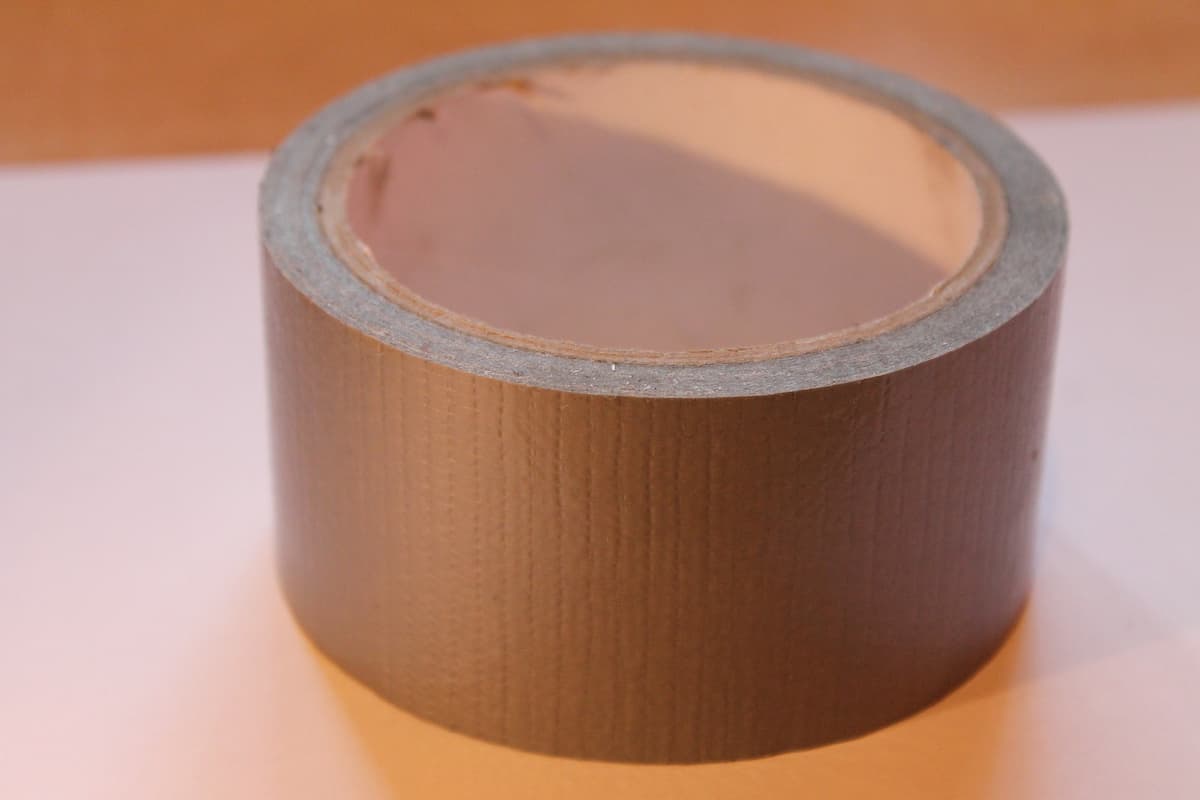Will Bed Bugs Stick to Duct Tape?
Tape traps do a great job of catching pests like mice and roaches, so many people wonder if they can use the same trick on bed bugs.
Bed bugs often don’t stick to duct tape. You may catch some of these insects with duct tape, but most of them will walk right over it without sticking. If you want to use traps for bed bugs, interceptors, glue, and pheromone devices work better than duct tape.
Do Duct Tape Traps Work on Bed Bugs?

Duct tape traps do not work well for catching bed bugs.
Bed bugs are very light insects, so they tend to glide over duct tape instead of getting stuck to it.
In general, duct tape traps work much better for larger and heavier insects, like roaches.
How to Make a Duct Tape Trap for Bed Bugs
Although duct tape traps don’t do a great job of catching bed bugs, some will stick, allowing you to dispose of them.
Thus, you may choose to put some out to try and cut down on the bed bug population in your home.
To create a bed bug trap out of duct tape, you should first get some double-sided duct tape because it will stay in place much better than the regular kind.
Then, you need to apply the duct tape to places where the insects frequent.
Most often, bed bugs prefer the sides of mattresses, but they also like locations such as baseboards and bed frames.
You can also put a duct tape trap on the legs of your bed.
Just remember, though, that duct tape will pull paint off of walls and other objects, so keep this in mind when applying.
Better Alternatives to Duct Tape Traps
If you are looking for a better yet similar alternative to duct tape traps, you should try bed bug interceptors, glue traps, or pheromone traps.
And, of course, if you want to go all out, you can use all three.
Bed Bug Interceptors
Bed bug interceptors, also called pitfall traps, catch bed bugs when they try to climb up or down the legs of furniture.
These devices are plastic dish-type objects with a moat that sit under the legs of your bed.
They work because bed bugs are not good at climbing vertically on slippery objects.
So, when bed bugs try to make their way down the legs of your bed, they will fall into the plastic dish and become stuck because they can not crawl out.
And many of these products include talcum powder to make it even harder for insects to escape.
To use a bed bug interceptor, you just need to place the leg of your bed or another piece of furniture in the center of the device.
You should also remove any bedding that hangs toward the floor, such as bed skirts, before placing interceptors to ensure the bugs walk straight down the legs of the bed and get trapped.
Glue Traps
First of all, if you are going to use glue traps, you should know that you don’t necessarily need those labeled as bed bug traps.
You can use glue traps for mice or roaches as well, and they will work just fine.
And all you need to do to use these traps is put them out in places where bed bugs frequent, such as baseboards and the dark area where your bed meets the wall.
You can also place them in any other location where you believe bed bugs are hiding.
Just keep in mind, though, that you will want to keep glue traps away from pets and children because although they won’t actually harm them, they can be challenging to remove.
Pheromone Traps
Bed bug pheromone traps are a relatively new invention that utilizes smells to lure bed bugs.
Most of these devices use a combination of aromas that mimic a bed bug nest.
Essentially, bed bugs get back to their hideout by sniffing for certain scents, specifically the smells of other bed bugs, eggs, excrement, and exoskeletons.
And these traps imitate these aromas so that the bed bugs believe they’re making their way back home.
Instead, though, they fall right into the trap.
To use these devices, you will need to follow the directions on the product.
Can I Use Traps to Eliminate an Entire Bed Bug Infestation?

You may be able to eliminate a bed bug infestation from your home using only traps.
Yet honestly, it is quite doubtful that bed bug traps will catch all the insects in your house.
Bed bugs are notoriously sneaky, so they don’t easily fall for traps.
Really, for the most part, traps work best to confirm you have an infestation rather than actually combating it.
Because basically, when you lay out a trap, you’re likely to catch only a few insects, so people typically only use them as a sort of alarm system to prove they have bed bugs.
If you really want to combat an infestation, you should pair your traps with other means of eliminating bed bugs.
What Is the Best Way to Get Rid of Bed Bugs?
Most people agree that the best way to eliminate bed bugs is to have a professional pest expert perform a heat treatment.
In a heat treatment, an exterminator will use industrial-sized heaters to warm your house to at least 120°F (49°C) for several hours.
Doing so should kill all the bed bugs in your home because they can not stand this extreme heat for that long.
Is a Heat Treatment Expensive?
A heat treatment is rather expensive.
Generally, you will need to pay $1 to $3 per square foot.
Thus, for the average-sized house, the total will come out to around $3,000.
Conclusion
Bed bugs don’t stick to duct tape that well because they are so light that they generally just run over the top of it.
Other options, such as pheromone traps, work better if you want to use traps for bed bugs.
